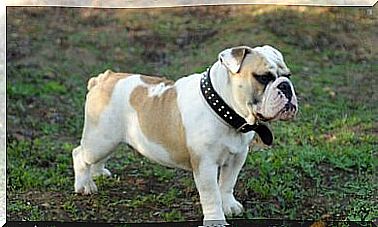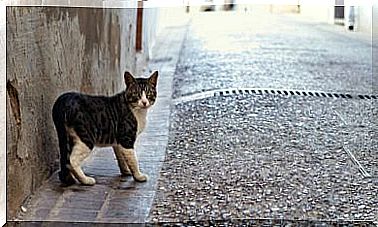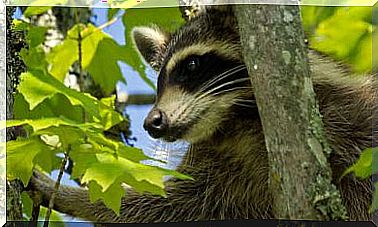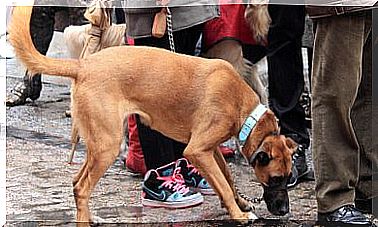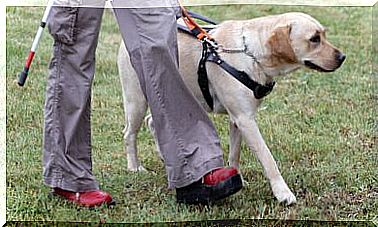Sugar Glider: Diet, Habitat And Characteristics
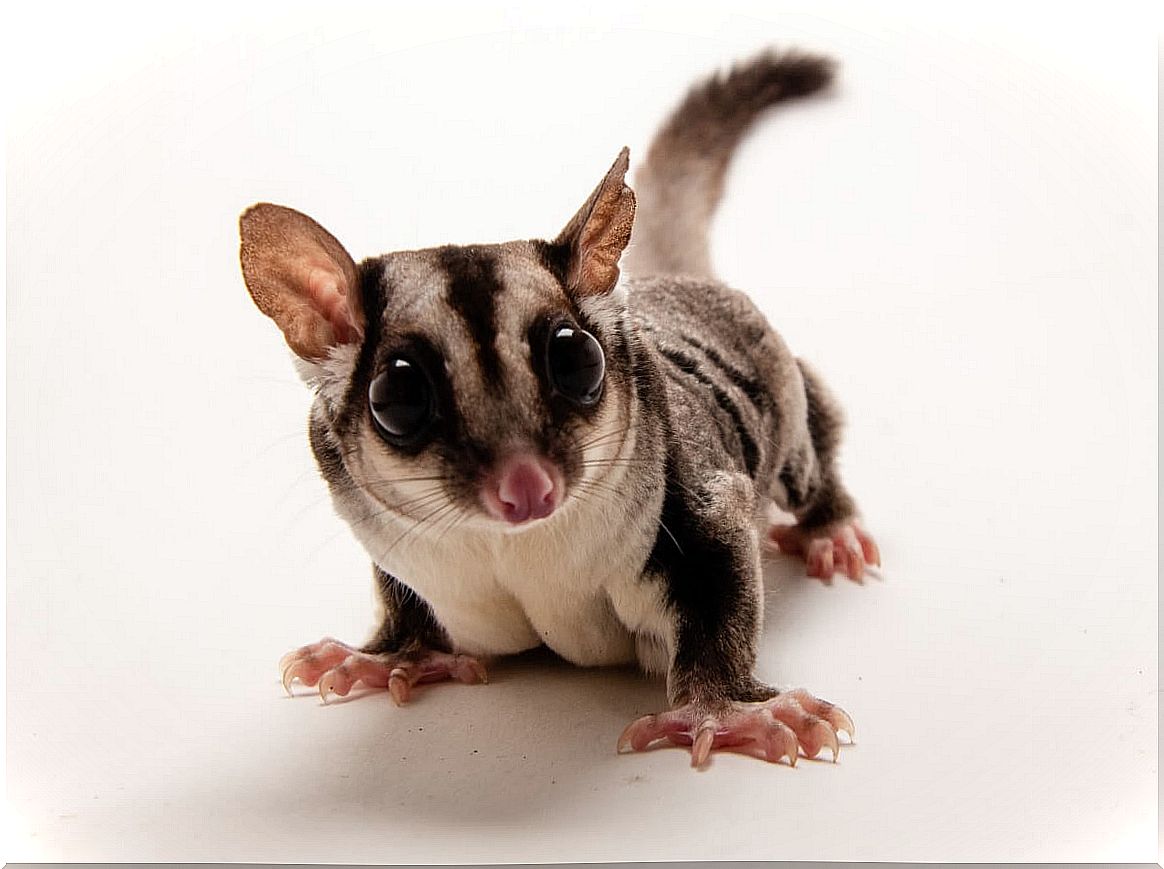
The sugar glider , scientifically known as Petaurus breviceps, is an adorable little mammal that gets its name from its particular dietary preferences. Its appearance looks like a combination between a dormouse and a flying squirrel, however, the sugar glider has nothing to do with rodents.
This animal is a marsupial and, therefore, its similarities with some placental mammals are a product of evolutionary convergence. If you want to learn more about this cute creature – which is increasing in popularity as an exotic pet – read on.
Characteristics of sugar glider
Sugar gliders are quite small marsupials, measuring only about 20 centimeters from head to tail and weighing between 110 and 150 grams. Males are bigger than females.
There are several subspecies of sugar glider, which are distinguished in their size and exact coloration. However, all of them feature countershading, a type of camouflage.
The countershading consists of a darker coloration on the top, which in the case of gliders is usually grayish, and a light coloration – white or cream – on the underside. This allows the animal to blend in with the ground when viewed from above and with the sky when viewed from below.
In addition, gliders feature darker lines around the eyes, in the center of the head, along the spine, and around the extremities, giving them their distinctive appearance.
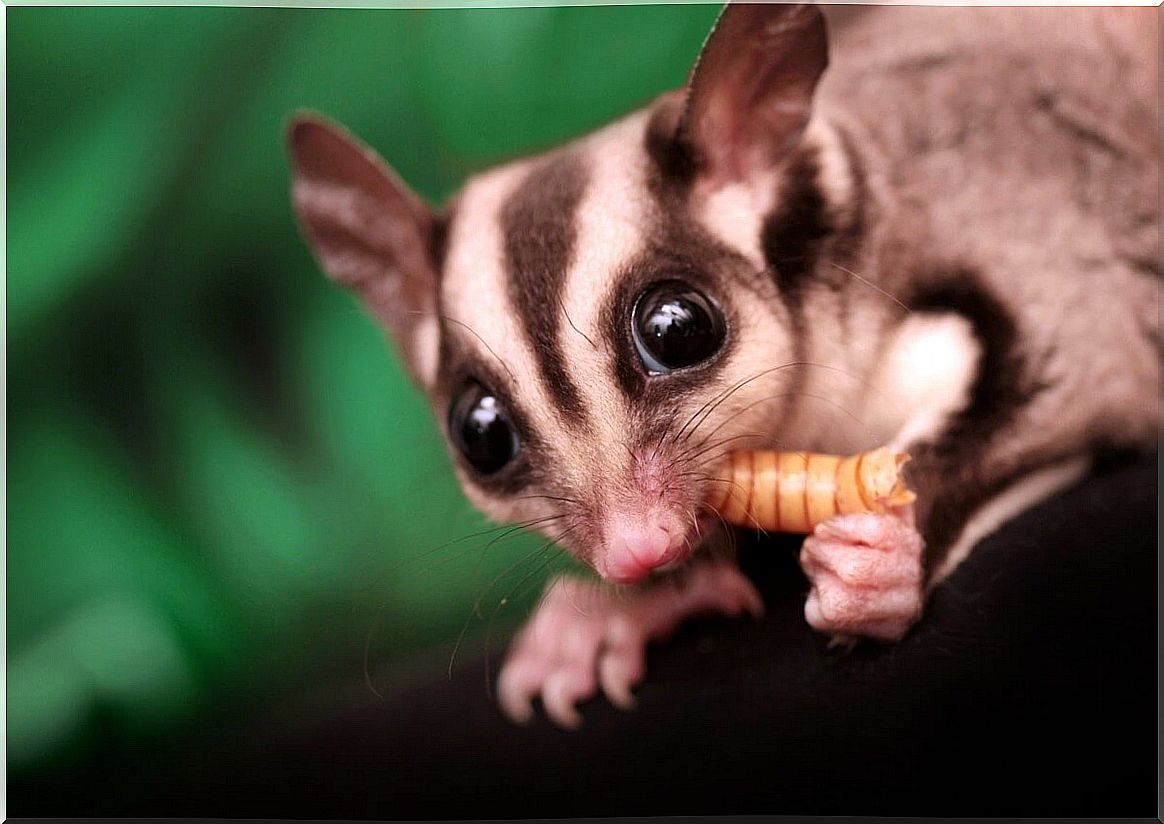
These animals also show some very striking morphological adaptations. Of course, the most spectacular is the membrane that connects its hind and front limbs, as in flying squirrels. This membrane is called “patagio” and allows them to glide among the trees.
On the other hand, it should be noted that gliders have opposable thumbs on the hind legs, which are of great help when moving between the branches. As marsupials that they are, the females present the typical pouch or pouch, where the young develop.
Range of distribution and habitat
Sugar gliders are endemic to Australia, Indonesia, and Papua New Guinea, although they have also been introduced to Tasmania. In addition, they are very numerous, with large stable populations in a considerable part of this wide distribution range.
These marsupials mainly inhabit forested areas, whether they are primary, secondary or degraded forests. They are very adaptable and tolerate a wide range of habitats, as they even inhabit those disturbed by man. Specimens have been found in agricultural plantations and urban parks.
During the day, P. breviceps sleep grouped in leaf nests, which they form inside holes in trees. At night, these animals emerge from their shelters to search for food in their territory, which can occupy up to 0.5 hectares.
These territories are shared with other species of similar night gliders, with which they avoid competition, which would be detrimental to all species. This is achieved thanks to a strategy known as niche partitioning.
Sugar glider feeding
Gliders have a flexible and variable diet, which depends on the availability of food in each season. Their diet is omnivorous, but they are best known for their preference for sweet foods.
During the summer, these gliding marsupials mainly consume insects, arachnids and other arthropods, which are more abundant in this season. In winter, when arthropods decline, the diet is based on fruit, pollen, nectar, resin, and tree sap. Gliders also feed on eggs, small reptiles, birds, and mammals.
To obtain the sap or resin from the trees, the sugar glider breaks the bark with its teeth. With its oral appliance it is able to open holes, through which the sugary liquid of the vegetable escapes.
Social behavior
Gliders are deeply social animals that live in groups of up to 10 individuals. As such, these marsupials are highly communicative and maintain close bonds with members of their nest, through strategies such as grooming.
Chemical communication is very important to them. Gliders have a large number of glands that emit chemical secretions. Through smell, the rest of the specimens in the environment can obtain information about the animal that deposited the secretions: its characteristics, territory or which colony it belongs to.
Gliders are also great acoustic communicators: they emit a series of vocalizations that have different social interpretations. The sounds inform about the state of the emitting animal or about some aspect of the environment that surrounds it.
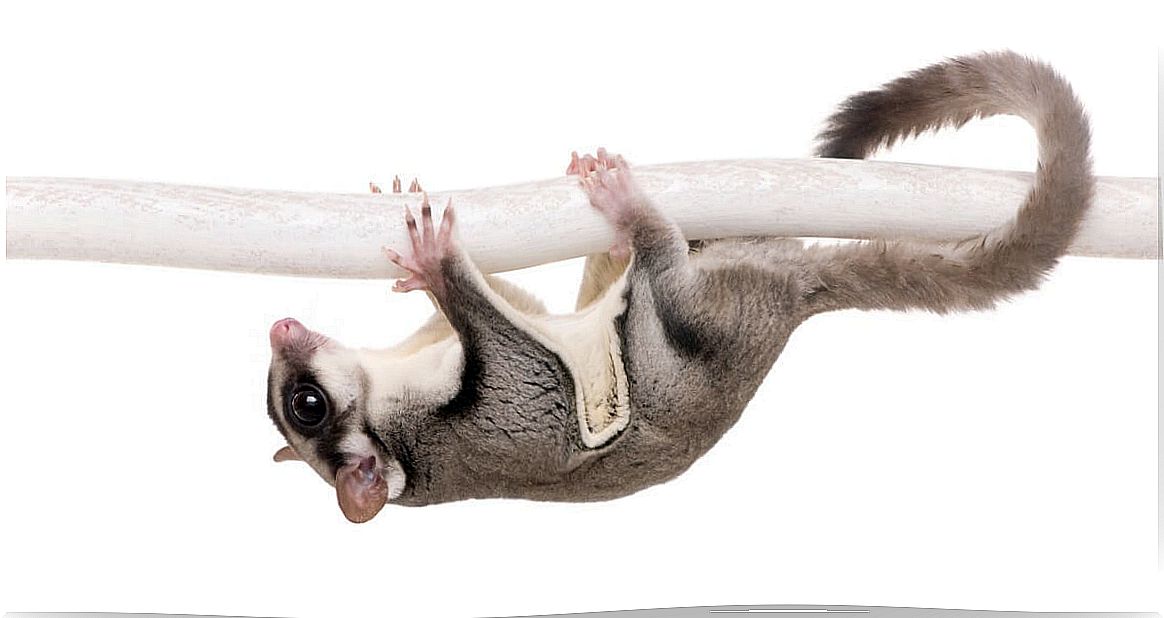
The sugar glider is a very charismatic animal, so many people want to have it as a pet. However, they are nocturnal, climbing and very active beings that need the company of many gliders. As a result, they do not adapt well to domestic life and are not suitable pets for most people.

